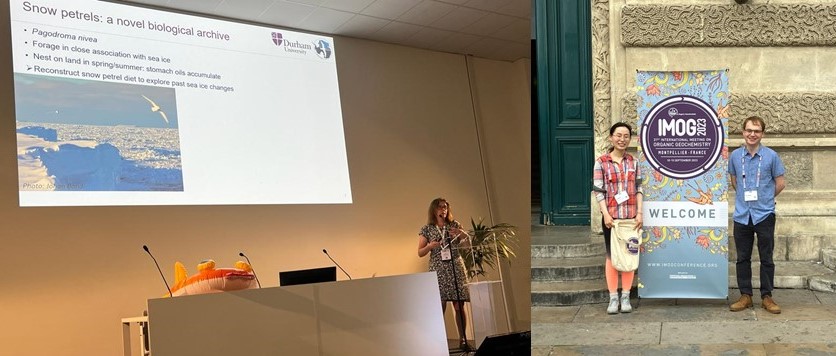ANTSIE team on (conference) tour
September 2023 has been a busy month for the ANTSIE team, presenting our research at several national and international meetings which have spanned a wide range of disciplines.
Thale Damm-Johnsen, Yas Cole and Erin McClymont attended the UK Paleoclimate Society meeting at the Geological Society of London to show new stomach-oil deposit data to an unsuspecting audience of climate scientists. Thale gave a prize-winning talk on past sea ice changes using stable isotope analyses, and Yas presented her poster on lipid biochemistry as tracers of past diet. Due to the pandemic, this was the first in-person meeting of the UK Paleoclimate Society since its inauguration in 2017, and it included excellent sessions on equality, diversity and inclusion (EDI), careers pathways, and writing for publication.
The following week, Erin McClymont presented at the SCAR-INSTANT meeting in Trieste, Italy. SCAR-INSTANT is an international research programme seeking to better understand the Antarctic ice sheet contribution to past and future sea-level change, which includes an assessment of how sea ice and the ice sheet might interact. Erin presented an overview of the recent ANTSIE snow petrel tracking data as well as reconstructions of snow petrel diet over both the last ~3000 years and during an interval of time where the Antarctic sea-ice extent was far greater than today. The meeting was inter-disciplinary, and included learning about indigenous knowledge of environmental change, developments in climate and ice sheet modelling, and new approaches to synthesise and improve our reconstructions of Antarctic environmental change.

At the same time, Zhongxuan Li and Mark Stevenson attended the International Meeting on Organic Geochemistry (IMOG) in Montpelier, France. This meeting is held every 2 years and was the first in-person IMOG since 2019 due to the pandemic. Zhongxuan presented a poster on biomarkers in surface sediments from the Sabrina coast off East Antarctica, and Mark gave a plenary lecture on his Holocene palaeoenvironmental reconstructions of climate change and sea-ice, inferred using dietary interpretations based on snow petrel stomach oil deposits. As a geochemistry-focussed meeting, there were many discussions about complementary datasets, ideas for new analyses and future research avenues, including the use of “untargeted” approaches to lipid analyses using Durham’s new GCMS OrbitrapTM system.
Finally, Claire Penny attended the UK Sea Ice group meeting at University College London, where she presented a poster on her sea ice reconstructions for the last ~3000 years using the geochemical composition of stomach-oil deposits from the westernmost sites on our transect. The conference was a great opportunity to learn more about modern observations and modelling of sea ice in both the Arctic and Antarctic, which our ANTSIE data will contribute to with longer-term perspectives of natural sea ice variability and ecosystem responses.
